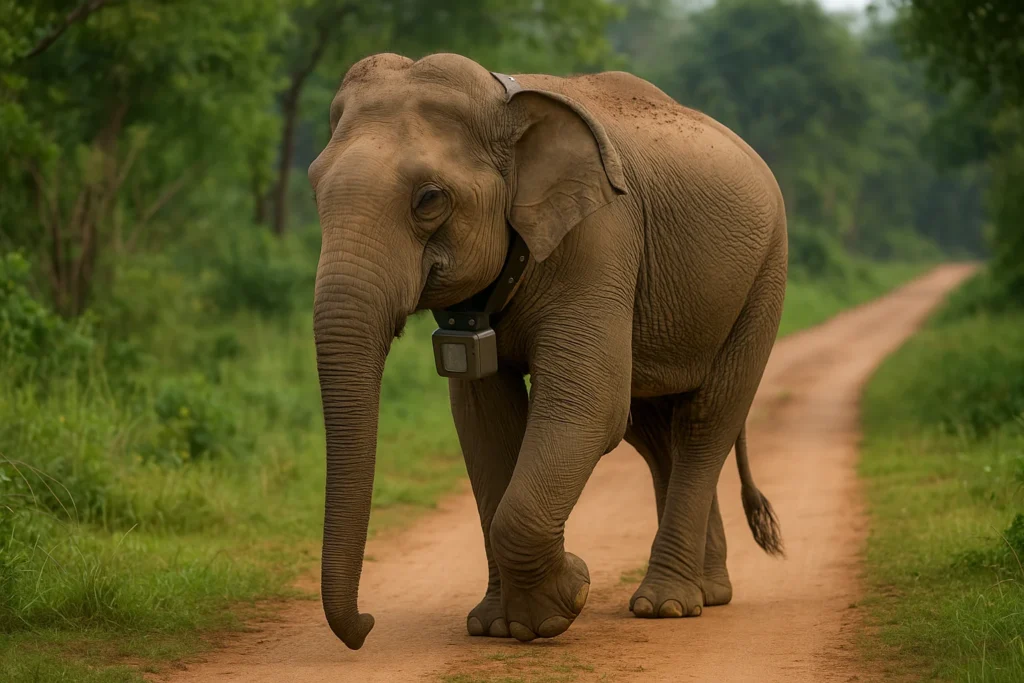India is a land of incredible natural beauty and ancient traditions, where elephants have long held a revered place in culture and mythology. Yet, these majestic creatures, symbols of wisdom and strength, face a silent, ongoing struggle for survival. As human populations expand and development pushes deeper into wild spaces, the traditional migration routes of elephants are often cut off, leading to dangerous encounters and heartbreaking conflicts between humans and these gentle giants. But a new era of conservation, powered by cutting-edge technology, is offering a lifeline, helping to guide elephants safely and significantly reducing these tragic clashes.
Imagine a world where a village knows exactly when a herd of elephants is approaching, allowing them to take precautions and avoid confrontation. Or where railway operators are alerted in real-time, preventing devastating train collisions. This isn’t just wishful thinking; it’s the reality being shaped by AI-powered GPS collars and strategically mapped wildlife corridors across India, turning the tide in the battle for coexistence.
The Unseen Battle: Human-Elephant Conflict
For generations, elephants have traversed vast landscapes in search of food, water, and mates, following ancient paths etched into the land. These paths, known as wildlife corridors, are vital for maintaining healthy, genetically diverse elephant populations. However, rapid urbanization, agricultural expansion, and linear infrastructure like roads and railway lines have increasingly fragmented these crucial corridors.
When elephants encounter human settlements, crops, or infrastructure, the result is often tragic. Farmers lose their livelihoods, trains collide with unsuspecting herds, and lives are lost on both sides. India faces a significant challenge with human-elephant conflict (HEC), with hundreds of human lives and elephants lost annually. Electrocution, train accidents, and retaliatory killings are among the leading causes of elephant deaths, while humans often suffer injuries or fatalities when caught in an elephant’s path, or when their homes and crops are destroyed. This escalating conflict underscores the urgent need for innovative solutions that protect both human communities and these endangered animals.
Eyes in the Wild: The Power of GPS Collars
At the heart of this new conservation strategy are advanced GPS collars. These robust devices are carefully fitted around the necks of selected elephants, often matriarchs who lead their herds. Each collar contains a GPS unit that regularly transmits location data to satellites, which then relay this information to a central monitoring system.
But it’s not just about knowing where an elephant is. The true power lies in combining this GPS data with Artificial Intelligence (AI). AI algorithms analyze the vast amounts of data collected from these collars, learning elephant movement patterns, predicting their routes, and even identifying unusual behavior that might indicate distress or a potential deviation into human-dominated areas. This sophisticated analysis transforms raw data into actionable intelligence.
AI Corridors: Guiding Giants to Safety
The concept of “AI corridors” isn’t about building physical barriers but rather creating a “smart” network that guides elephants and prevents dangerous encounters. Here’s how it works:
- Mapping Elephant Highways: Conservationists, using decades of field research and now enhanced by GPS data, have meticulously identified and mapped key elephant corridors across India. The Indian Government’s Project Elephant, for instance, has identified over a hundred crucial corridors.
- Real-time Monitoring and Alerts: The AI system continuously processes data from collared elephants. If an elephant or a herd is approaching a known conflict zone – a village, an agricultural field, or a railway track – the AI triggers immediate alerts. These alerts are sent to forest department officials, local community volunteers, and sometimes even directly to railway control rooms or villagers’ mobile phones.
- Predictive Analytics: Beyond real-time alerts, AI can analyze historical data to predict when and where elephants are most likely to move. This allows authorities to implement proactive measures, such as temporarily slowing down trains in specific sections, advising villagers to secure their homes, or deploying rapid response teams to gently guide elephants away from danger.
- Behavioral Insights: The long-term data collected through GPS collars, analyzed by AI, provides invaluable insights into elephant behavior, habitat use, and the impact of human activities on their movements. This knowledge helps refine conservation strategies, identify critical habitats that need protection, and inform land-use planning to reduce future conflicts.
One notable success story involves the use of AI-powered thermal cameras along railway tracks in regions like Kerala and Tamil Nadu. These systems detect elephant movement near tracks and alert train operators instantly, leading to a significant reduction in elephant fatalities due to train collisions.
Saving Lives on Both Sides
The impact of this technological intervention is profound. By providing an early warning system, AI-powered GPS corridors are helping to save hundreds of lives annually, both human and elephant.
- Reduced Elephant Fatalities: With timely alerts, authorities can prevent elephants from venturing onto railway lines, into dangerous snares, or into areas where retaliatory actions might occur.
- Decreased Human Casualties: Villagers are given precious time to secure themselves and their property, reducing the risk of direct confrontation. Community involvement in monitoring and alert systems, such as “Hathi Mitra Dals” (Elephant Friend Groups), has proven incredibly effective.
- Minimizing Crop Damage: Early warnings allow farmers to protect their crops, mitigating the economic losses that often fuel resentment towards elephants.
- Fostering Coexistence: By reducing negative interactions, these technologies build trust and understanding between human communities and elephants, fostering a pathway towards more harmonious coexistence.
This approach recognizes that protecting wildlife isn’t just about drawing lines on a map; it’s about understanding complex ecological needs and leveraging technology to bridge the gap between human development and animal survival.
Beyond Tracking: A Holistic Approach
While GPS collars and AI are powerful tools, they are part of a larger, holistic conservation strategy:
- Habitat Restoration: Efforts are underway to restore degraded forest patches within corridors, providing better natural resources for elephants and reducing their need to venture outside.
- Community Engagement: Local communities are vital partners in conservation. Education programs and compensation schemes for crop damage or loss of life are crucial for building support for elephant protection.
- Policy and Enforcement: Strong policies that protect corridors from encroachment and rigorous enforcement against poaching and illegal activities are indispensable.
- Water and Fodder Management: Creating and maintaining waterholes and fodder plantations within forest areas helps keep elephants within protected zones.
The data from GPS collars informs all these aspects, guiding where to focus restoration efforts, which communities need the most support, and where stronger enforcement is required.
The Future Horizon: Smarter Conservation
The application of AI in wildlife conservation in India is still evolving, with immense potential for the future. Researchers are exploring:
- Smaller, Longer-Lasting Tags: Developing less intrusive tags with extended battery life to gather more continuous data.
- Advanced Sensors: Integrating additional sensors to monitor elephant health, stress levels, and even specific behaviors in more detail.
- Predictive Modeling: Refining AI models to anticipate elephant movements with even greater accuracy, incorporating factors like weather patterns, vegetation changes, and human activity.
- Drone Surveillance: Using drones equipped with thermal cameras and AI for real-time monitoring of elephant herds in challenging terrains, especially at night.
The collaboration between wildlife scientists, AI experts, government agencies, and local communities is a testament to India’s commitment to protecting its iconic elephants. The journey is long, and challenges remain, but with every elephant safely guided through a corridor, and every human life saved from conflict, India is writing a new, hopeful chapter in the story of human-wildlife coexistence. It’s a powerful demonstration of how technology, when wielded with compassion and intelligence, can truly safeguard the future of our planet’s most magnificent creatures.



